|
I am a PhD student at Université de Montréal and Mila, under the supervision of Liam Paull. My affiliation is with the Robotics and Embodied AI Lab (REAL), where I pursue research at the intersection of robotics and AI. My primary research interests lie in the areas of world models for dynamic environments and dynamic SLAM. Previously, I obtained an M.Sc. from Université de Montréal in 2023, a postgraduate Diploma in Artificial Intelligence in 2021, and a BEng degree as a Mechatronics Engineer in 2019. The latter two degrees were completed at the Universidad Autónoma de Occidente (UAO) in Cali, Colombia. miguel [dot] angel [dot] saavedra [dot] ruiz [at] umontreal [dot] ca |
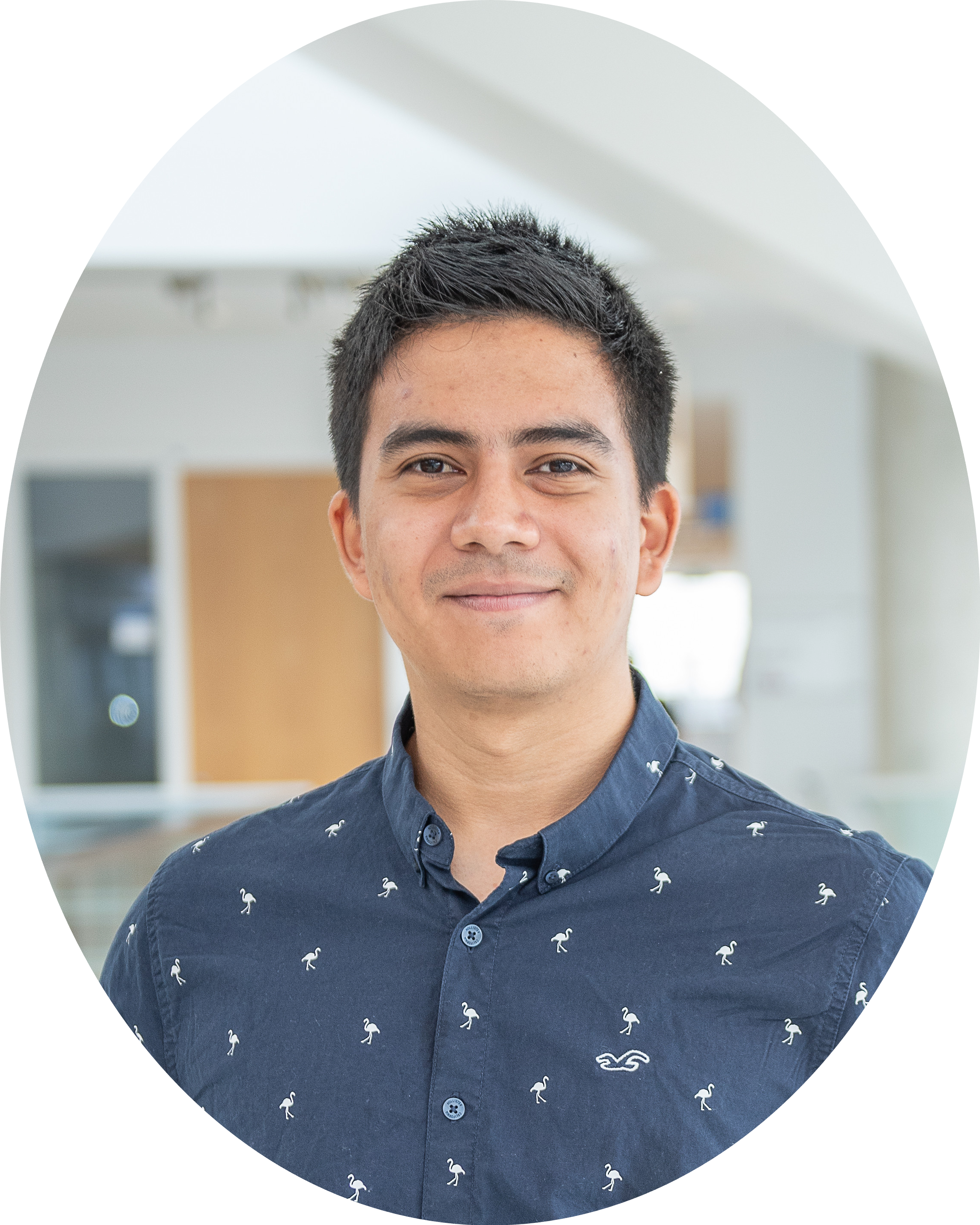
|
|
My research interests include:
|
|
|
||
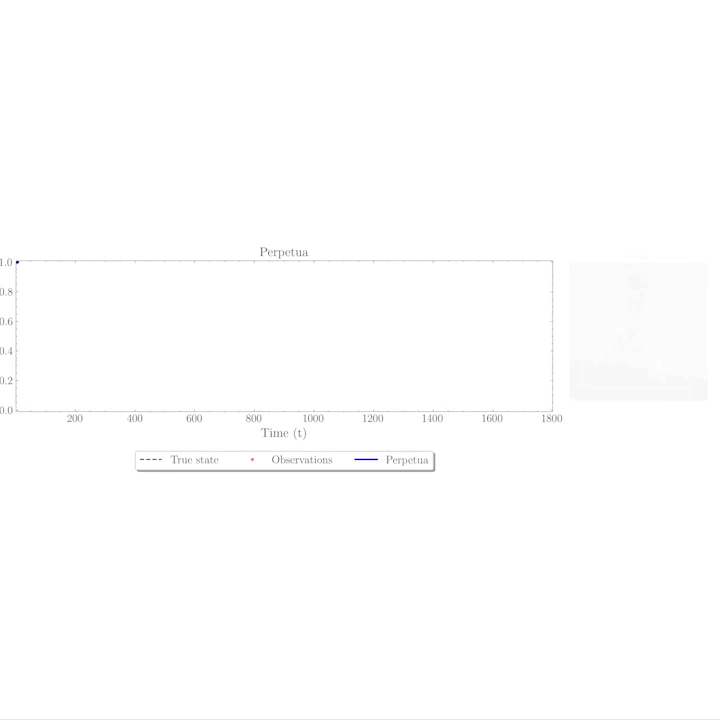

|
Miguel Saavedra-Ruiz, Samer B. Nashed, Charlie Gauthier, Liam Paull IEEE/RSJ International Conference on Intelligent Robots and Systems (IROS), 2025 (Conference Proceedings)
pre-print /
webpage /
code /
bibtex
@inproceedings{saavedra2025perpetua,
title={Perpetua: Multi-Hypothesis Persistence Modeling for Semi-Static Environments},
author={Saavedra-Ruiz, Miguel and Nashed, Samer and Gauthier, Charlie and Paull, Liam},
booktitle={2025 IEEE/RSJ International Conference on Intelligent Robots and Systems (IROS)},
pages={},
year={2025},
organization={IEEE}
}
|
|
|
|
||
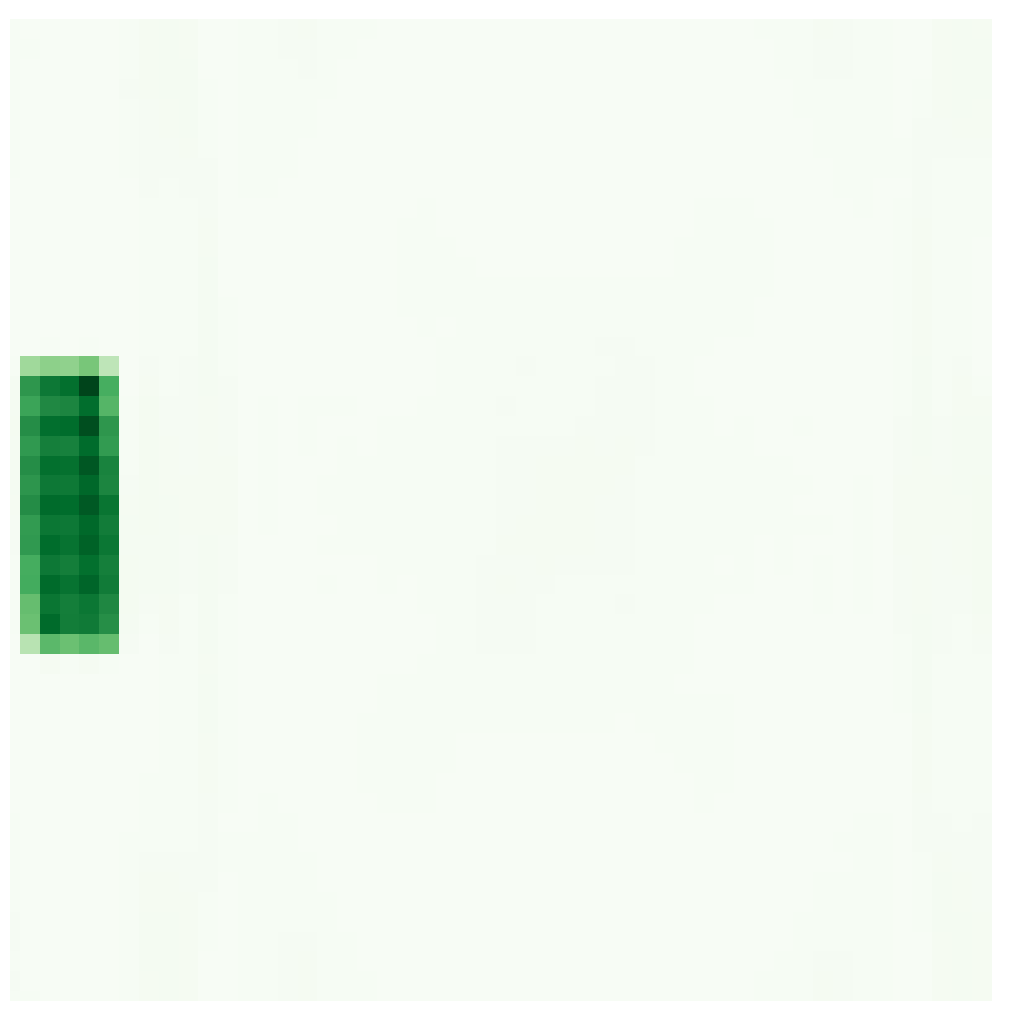
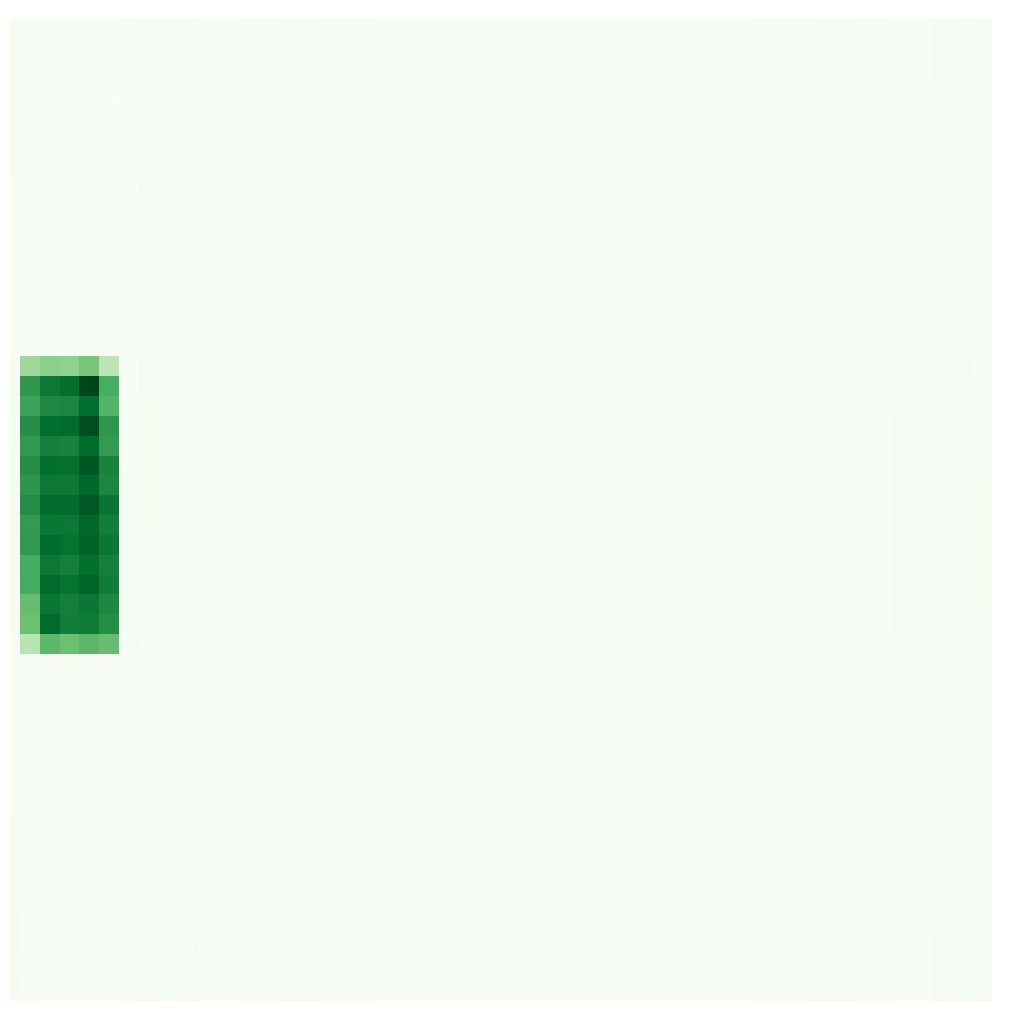
|
Miguel Saavedra-Ruiz, Steven Parkison, Ria Arora, James Forbes, Liam Paull IEEE Robotics and Automation Letters (RA-L), 2025 (Journal Publication) Robotic Perception And Mapping: Frontier Vision & Learning Techniques (ROPEM) @ IROS, 2023 (Workshop)
arXiv /
publication /
code /
webpage /
poster /
bibtex
@article{saavedra2025hef,
author={Saavedra-Ruiz, Miguel and Parkison, Steven A. and Arora, Ria and Forbes, James Richard and Paull, Liam},
journal={IEEE Robotics and Automation Letters},
title={The Harmonic Exponential Filter for Nonparametric Estimation on Motion Groups},
year={2025},
volume={10},
number={2},
pages={2096-2103},
doi={10.1109/LRA.2025.3527346}
}
|
|
|
|
||
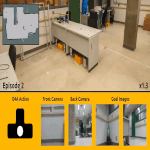
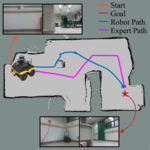
|
Sacha Morin *, Miguel Saavedra-Ruiz *, Liam Paull IEEE/RSJ International Conference on Intelligent Robots and Systems (IROS), 2023 (Conference Proceedings)
code /
arXiv /
webpage /
bibtex
@inproceedings{morin2023one,
title={One-4-all: Neural potential fields for embodied navigation},
author={Morin, Sacha and Saavedra-Ruiz, Miguel and Paull, Liam},
booktitle={2023 IEEE/RSJ International Conference on Intelligent Robots and Systems (IROS)},
pages={9375--9382},
year={2023},
organization={IEEE}
}
An end-to-end fully parametric method for image-goal navigation that leverages self-supervised and manifold learning to replace a topological graph with a geodesic regressor. During navigation, the geodesic regressor is used as an attractor in a potential function defined in latent space, allowing to frame navigation as a minimization problem.
A fundamental task in robotics is to navigate between two locations.
In particular, real-world navigation can require long-horizon planning
using high-dimensional RGB images, which poses a substantial challenge
for end-to-end learning-based approaches. Current semi-parametric methods
instead achieve long-horizon navigation by combining learned modules with
a topological memory of the environment, often represented as a graph over
previously collected images. However, using these graphs in practice typically
involves tuning a number of pruning heuristics to avoid spurious edges, limit
runtime memory usage and allow reasonably fast graph queries. In this work,
we present One-4-All (O4A), a method leveraging self-supervised and manifold
learning to obtain a graph-free, end-to-end navigation pipeline in which the
goal is specified as an image. Navigation is achieved by greedily minimizing
a potential function defined continuously over the O4A latent space. Our system
is trained offline on non-expert exploration sequences of RGB data and controls,
and does not require any depth or pose measurements. We show that O4A can reach
long-range goals in 8 simulated Gibson indoor environments, and further demonstrate
successful real-world navigation using a Jackal UGV platform.
|
|
|
|
|
|
||
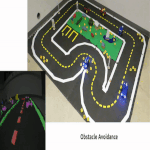
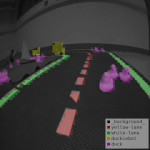
|
Miguel Saavedra-Ruiz *, Sacha Morin *, Liam Paull Conference on Robotics and Vision (CRV), 2022 (Conference Proceedings)
paper /
code (model) /
code (servoing) /
arXiv /
webpage /
duckietown coverage /
poster /
bibtex
@article{saavedra2022monocular,
title = {Monocular Robot Navigation with Self-Supervised Pretrained Vision Transformers},
author = {Saavedra-Ruiz, Miguel and Morin, Sacha and Paull, Liam},
year = 2022,
journal = {arXiv preprint arXiv:2203.03682}
}
Visual Servoing navigation using pre-trained Self-Supervised Vision Transformers.In this work, we consider the problem of learning a perception model for monocular robot navigation using few annotated images. Using a Vision Transformer (ViT) pretrained with a label-free self-supervised method, we successfully train a coarse image segmentation model for the Duckietown environment using 70 training images. Our model performs coarse image segmentation at the 8x8 patch level, and the inference resolution can be adjusted to balance prediction granularity and real-time perception constraints. We study how best to adapt a ViT to our task and environment, and find that some lightweight architectures can yield good single-image segmentations at a usable frame rate, even on CPU. The resulting perception model is used as the backbone for a simple yet robust visual servoing agent, which we deploy on a differential drive mobile robot to perform two tasks: lane following and obstacle avoidance. |
|
|
|
||
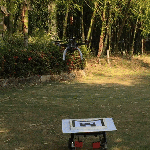
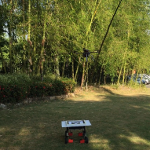
|
Miguel Saavedra-Ruiz, Ana Pinto, Victor Romero-Cano IEEE Aerospace And Electronic Systems , 2021 (Journal publication)
paper /
code /
poster /
thesis /
arXiv /
video /
bibtex
@article{9656574,
title = {Monocular Visual Autonomous Landing System for Quadcopter Drones Using Software in the Loop},
author = {Saavedra-Ruiz, Miguel and Pinto-Vargas, Ana Maria and Romero-Cano, Victor},
year = 2022,
journal = {IEEE Aerospace and Electronic Systems Magazine},
volume = 37,
number = 5,
pages = {2--16},
doi = {10.1109/MAES.2021.3115208}
}
Autonomous landing system for a UAV on a terrestrial vehicle using robotics vision and control.My BEng degree project addressed the problem of the autonomous landing of a UAV with a landing platform located on the top of a ground vehicle. The project utilized vision-based techniques to detect the landing platform, a Kalman filter was tailored for the tracking phase and finally, a PID controller sent control commands to the flight controller of the UAV to land properly on the platform. Rigorous assessments were conducted through the simulation of the whole robotic stack with ROS and gazebo in the software in the loop provided by PX4. Ultimately, the system was tested in a custom DJI F-450 and embedded in a Odroid XU4. The system demonstrates a satisfactory performance and was able to land with a mean error of ten centimeters from the center of the landing platform (Implemented in Python, C++/Linux). Autonomous landing is a capability that is essential to achieve the full potential of multi-rotor drones in many social and industrial applications. The implementation and testing of this capability on physical platforms is risky and resource-intensive; hence, in order to ensure both a sound design process and a safe deployment, simulations are required before implementing a physical prototype. This paper presents the development of a monocular visual system, using a software-in-the-loop methodology, that autonomously and efficiently lands a quadcopter drone on a predefined landing pad, thus reducing the risks of the physical testing stage. In addition to ensuring that the autonomous landing system as a whole fulfils the design requirements using a Gazebo-based simulation, our approach provides a tool for safe parameter tuning and design testing prior to physical implementation. Finally, the proposed monocular vision-only approach to landing pad tracking made it possible to effectively implement the system in an F450 quadcopter drone with the standard computational capabilities of an Odroid XU4 embedded processor. |
|
|
|
||
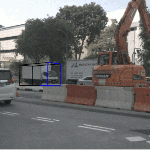
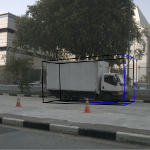
|
Gustavo Salazar, Miguel Saavedra-Ruiz, Victor Romero-Cano LatinX Workshop at CVPR, 2021 (Workshop)
paper /
code /
arXiv /
poster /
bibtex
@inproceedings{salazargomez2021highlevel,
title={High-level camera-LiDAR fusion for 3D object detection with machine learning},
author={Gustavo A. Salazar-Gomez and Miguel A. Saavedra-Ruiz and Victor A. Romero-Cano},
booktitle={Proceedings of the LatinX Workshop at CVPR},
year={2021},
publisher={CVPR},
}
3D object detection of vehicles in the NuScenes dataset using classic Machine learning such as DBSCAN and SVMs.3D object detection is a problem that has gained popularity among the research community due to its extensiveset of application on autonomous navigation, surveillance and pick-and-place. Most of the solutions proposed in the state-of-the-art are based on deep learning techniques and present astonishing results in terms of accuracy. Nevertheless, a set of problems inherits from this sort of solutions such as the need of enormous tagged datasets, extensive computational resources due to the complexity of the model and most of the time, no real-time inference. This work proposes an end-to-end classic Machine Learning (ML) pipeline to solve the 3D object detection problem for cars. The proposed method is leveraged on the use of frustum region proposals to segment and estimate the parameters of the amodal 3D bounding box. Here we do not deal with the problem of 2D object detection as for most of the research community this is considered solved with ConvolutionalNeural Networks (CNN). This task is addressed employing different ML techniques such as RANSAC for road segmentation and DBSCAN for clustering. Global features are extracted out of the segmented point cloud using The Ensemble of Shape Functions (ESF). Some feature are engineered through PCA and statistics. Finally, the amodal 3D bounding box parameters are estimated through a SVR regressor. |
|
|
|
||
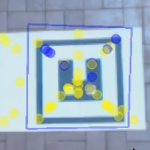
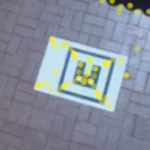
|
Miguel Saavedra-Ruiz, Ana Pinto, Victor Romero-Cano CCRA, 2018 (Conference Proceedings)
paper /
code /
video /
bibtex
@inproceedings{8588112,
title = {Detection and tracking of a landing platform for aerial robotics applications},
author = {M. S. {Ruiz} and A. M. P. {Vargas} and V. R. {Cano}},
year = 2018,
booktitle = {2018 IEEE 2nd Colombian Conference on Robotics and Automation (CCRA)},
volume = {},
number = {},
pages = {1--6}
}
Object Detection and tracking pipelines to detect a landing pad on the ground from a UAV.Aerial robotic applications need to be endowed with systems capable to accurately locate objects of interest to perform specific tasks at hand. I Developed an embedded vision-based landing platform detection and tracking system with ROS and OpenCV. The system extended the capabilities of a SURF-based feature detector-descriptor that makes detections of a landing pad alongside a Kalman filter-based estimation module. The system demonstrated a considerable improvement over only-detector methods, diminishing the detection error and providing accurate estimations of the landing pad position (Implemented in C++/Linux). |
|
|
|
||
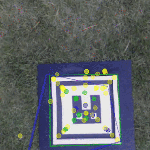
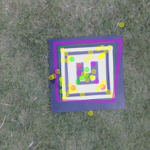
|
Miguel Saavedra-Ruiz, Ana Pinto, Victor Romero-Cano (Poster Presentation) code / poster Localization of a landing pad located at the top of a ground vehicle with a UAV. |
|
|
|
||

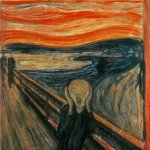
|
Miguel Saavedra-Ruiz, Gustavo Salazar, Sebastian Botero code / report (spanish) Style-transfer implementarion based on the paper A neural algorithm of artistic style using VGG-19.Implementation of Style-Transfer based on the original paper 'A neural algorithm of artistic style'. As stated by the authors, style-transfer is 'an artificial system based on a Deep Neural Network that creates artistic images of high perceptual quality'. In this work we aimed to replicate the original paper in a Pytorch-based implementation using as backbone a VGG-19 model. The results present how the implementation is capable to transfer the desired content and style to a different image and even create an aesthetic result from scratch. This work was locally deployed using docker-compose and web sockets in order the create a seamlessly implementation of style-transfer with an intuitive GUI. |
|
|
|
||
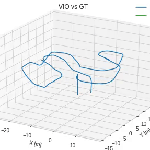
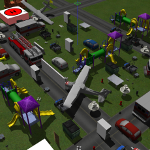
|
Miguel Saavedra-Ruiz code Stereo Visual Odometry and Visual Inertial Odometry pipelines to estimate the pose of a quad-rotor.Implemented Stereo Visual Odometry and Visual Inertial Odometry pipelines to estimate the pose of a quad-rotor. The system works by taking subsequent image pairs and matching features throughout the test. Once those features are obtained, 3d-points coordinates were retrieved with the depth map of the images and the extrinsic camera calibration matrix. Finally, the trajectory is estimated using 3D-2D Perspective-n-Point (PNP). As an additional step, the VO trajectory was used with the IMU data in an Error-State Extended Kalman Filter to estimate the pose even when most of the VO observations were dropped. Both VO and VIO showed good results estimating the trajectory of the UAV (Implemented in Python/Linux). |
|
|
|
||
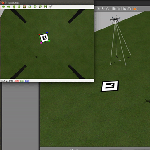
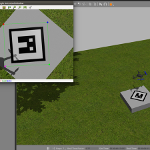
|
Miguel Saavedra-Ruiz code / video Simulation of an autonomous landing system for a UAV with Gazebo, ROS and the Software in the loop provided by PX4.Simulated an autonomous landing system for a UAV with Gazebo, ROS and the Software in the loop provided by PX4. The project consisted in the development of different packages in C++ and Python which allowed the assessment of an autonomous landing system. This robotics simulation allowed the thoroughly development and evaluation of a landing pipeline for a UAV (Implemented in Python, C++/ Linux). |
|
|
|
||
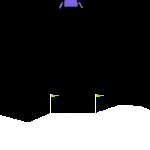
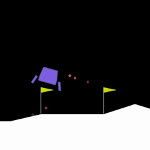
|
Miguel Saavedra-Ruiz code / video Lunar Lander, Mountain Car and Pendulum classical control tasks solved using RL.
Trained a lunar lander in a simulated environment with Reinforcement Learning.
The agent was implemented with the Expected-Sarsa algorithm and used a Neural
networkfor for action-values approximation. The algorithm was capable to do
planning steps with experience replay and learn a policy for the landing of the
agent. Thorughout the specialization I implemented different projects, some of
those are listed below.
* Solved a Gridworld city with Dynamic programming to find an optimal
policie.
* Implemented a Dyna-Q and Dyna-Q+ algorithms in a changing maze environment
to assess the performance of planning methods in RL.
* Implemented an Average Reward Softmax Actor-Critic algorithm using
Tile-coding to solve the Pendulum Swing-Up continuous problem.
* Solved the Mountain car and Lunar Lander problems.
|
|
|
|
||
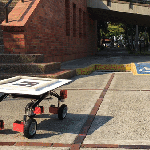
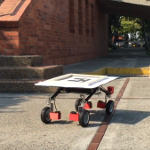
|
Miguel Saavedra-Ruiz code / video Teleoperation system for a car-like robot through mathematical modelling.Mathematical modelling of unmanned groundvehicles (UGV) is a well studied problem in robotics and essential for the control of a robot. Developed a teleoperation system for a car-like robot. The system received velocities in the local coordinate frame of the robot and through the inverse kinematics model of the vehicle these velocity commands were transformed to wheels’ speed and sent to the vehicle’s motors. This project was embedded in a Raspberry Pi3 to allow the remote control of the vehicle with a host computer through WIFI (Implemented in C/Linux). |
|
|
|
||

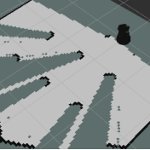
|
Miguel Saavedra-Ruiz slides / report Simulation of a localization and mapping system (laser-based SLAM) for a turtlebot2 in indoors.Equipping robotic systems with novel localization and navigation stacks is crucial for autonomous navigation. A localization and mapping system (laser-based SLAM) for a turtlebot2 in indoors was simulated. The system was capable to accurately localize the robot in a previously mapped environment and subsequently navigate to a specific position in an occupancy grid map (Implemented in C++/Linux). |
|
|
|
||
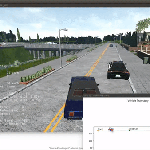
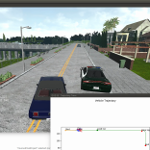
|
Miguel Saavedra-Ruiz video1 / video2 Wheeled-robot mathematical modelling through dynamical modelling (tire model), lateral and longitudinal control, state estimation with Kalman filters, visual perception and motion planning for self-driving vehicles.
This work involved four capstone projects in the area of self-driving cars.
Topics such as wheeled-robot mathematical modelling through dynamical modelling
(tire model), lateral and longitudinal control, state estimation with Kalman
filters, visual perception and motion planning were addressed. Most of the
projects were tested in the Carla Simulator to assess performance. A description
of the projects developed are presented below.
* Control of a car-like robot through a longitudinal and lateral controller.
The longitudinal controller was implemented with a PID and the lateral
controller was a cross-track error controller.
* Implementation of an error state extended Kalman Filter for the estimation
of the trajectory of a vehicle. The filter fused information from a GNSS
and IMU alongside the dynamic model of the vehicle to produce an accurate
destimation of its trajectory on the space.
* Robotics perception stack which detected the drivable space of the vehicle
through image segmentation. Canny edge detector was used to detect the
lines of the road and a depth representation of the scene was employed to
estimate the distance-to-objects in the road and avoid collision using only
image-based methods.
* Implemented a navigation stack in the Carla simulator with the use of grid
world representations and state machines for a simple navigation strategy.
|
|
|
|
||
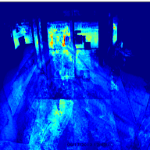

|
Miguel Saavedra-Ruiz Heat map generator based on computer vision techniques to stochastically estimate the most visited areas in an indoor space with a monocular camera.Implemented a heat map generator based on computer vision techniques to stochastically estimate the most visited areas in an indoor space with a monocular camera. A feature tracker method was used to estimate the average flow of persons and a deep convolutional neural network was employed to obtain the segmentation of the floor in the scene. This information was merge together to gather relevant information about the people habits in shopping centers or crowded areas (Implemented in Python/ Linux) |
|
|
|
|
Updated June 13th 2025 |